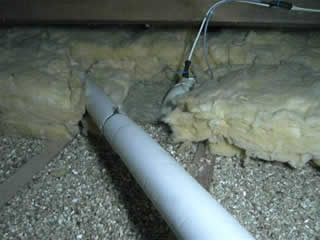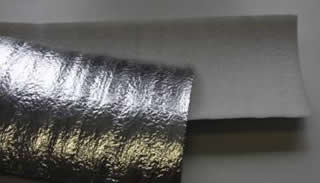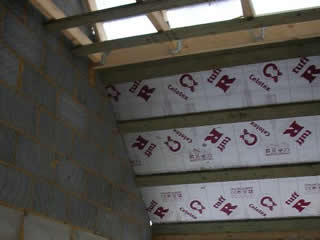As you are probably aware, heat rises and so insulating the loft of your home is one of the best energy saving measures that you can take. It is also one of the easiest measures to implement and normally only involves spreading the insulation around the loft area. In an un insulated house you roughly loose a quarter of all heat through the roof, by adding loft insulation this figure can be drastically reduced. The latest recommended depth of loft insulation is 270mm, if you have less than this you will not save as much energy and so it may be a good idea to check and top up if necessary.
The savings from installing loft insulation are considerable. If you had no loft insulation at all and you fit the recommended 270mm, then you could save over £200 from your heating bills. If you have insulation already, but not the recommended 270mm then you can still make considerable savings by topping it up to 270mm.
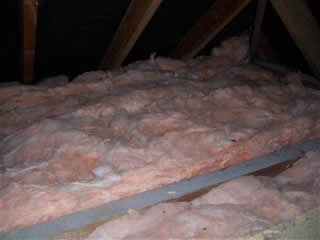
This is a typical loft that has been insulated. It is very important to insulate any pipes that are in the loft when you add loft insulation as it stops the heat rising from the house and so the loft is colder, which can freeze the pipes.
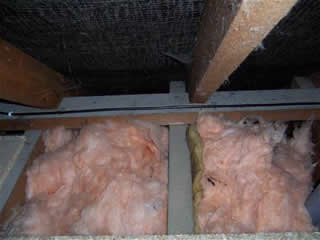
When insulating a loft it is important not to block any ventilation from the eaves. Here you can clearly see that insulation has purposely been omitted from these areas.
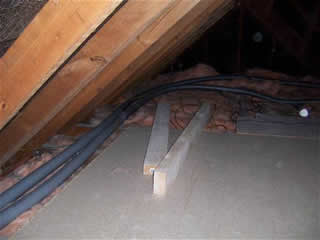
Once the correct thickness of insulation has been achieved you can board your loft if required. It is important that the new boards do not compress the loft insulation or else it will not be effective. Care should also be taken near the cables as these are often not notched into the joists and so they can become trapped when boarding out.
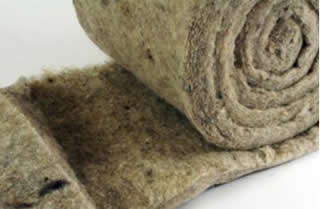
Wool Insulation: Loft insulation that is made from wool is a recent development. This kind of insulation has several benefits over it's glass fibre counterparts.
- • It requires only 15% of the energy needed to produce than that of other insulation.
- • It is biodegradable.
- • No protective clothing or masks are required.



